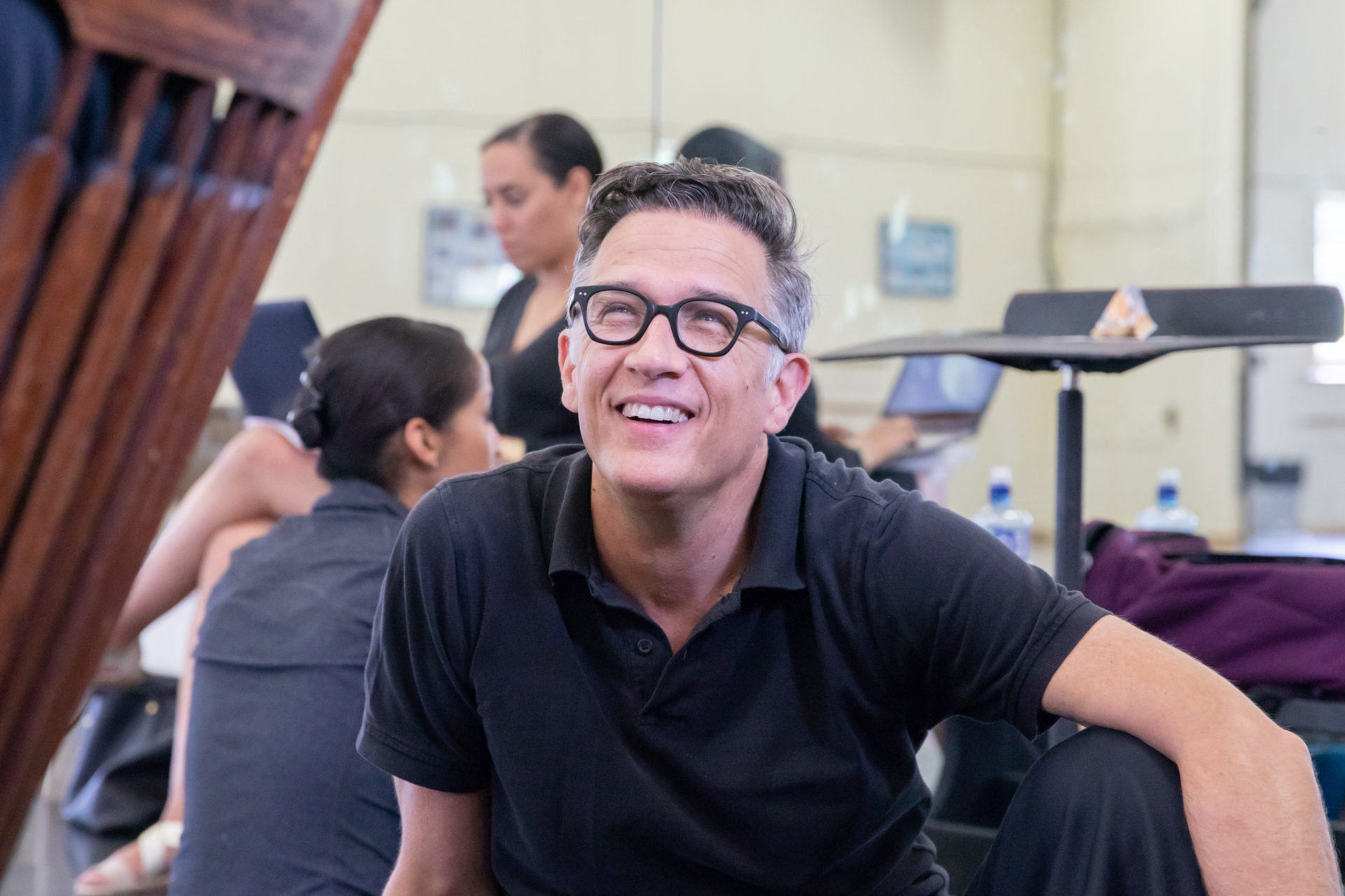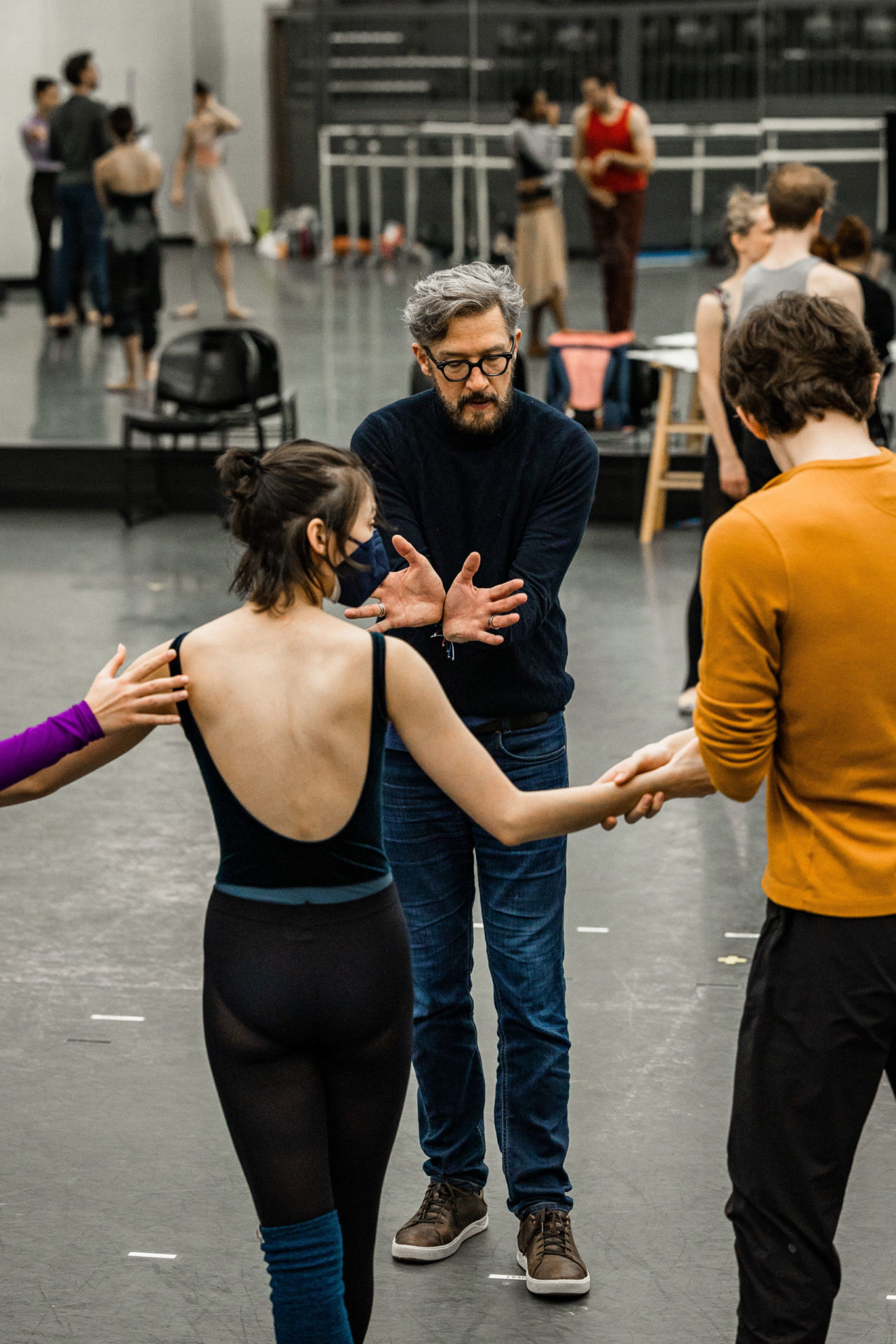The MCR Interview:
an Interview with Paul Vasterling
On the weekend of April 21-23 The Nashville Ballet will be holding a series of performances titled New in Nashville in honor of their departing artistic Director Paul Vasterling [PV]. Joseph Morgan [JM] had a chance to ask him a few questions on behalf of the Music City Review. Below is a slightly edited version of that emailed conversation.
JM: You’ve had a tremendous impact on the development of the art form in Nashville. At this point, how would you characterize Nashville Ballet? What separates it from other companies of its size? Please tell us you are leaving this wonderful organization in good hands!

PV: Nashville Ballet is an arts organization that is doing really well. Over the last 10 years, specifically, we have reached our goals in exciting ways. We’ve grown a lot both artistically and organizationally, and we’re in a good spot for a transition. Nick has been here for 7 years and knows what we’re all about. He is excited to take what we’ve done and build upon it in a way that’s really going to take us to the next level.
JM: My first experience with Nashville Ballet was the amazing Layla & the Majnun in 2016, danced wonderfully by Kayla Rowser and Brett Sjoblom. Of course, I am quite late to the party! Which of your choreographies was your favorite and why? what do you consider to be the pinnacle of your career (so far)?
PV: I joke that my favorite ballets are always the ones I created most recently. In this case, that would be Anthology, which highlighted lesser-known stories of Nashville’s past. But other favorites include Appalachian Spring, Lucy Negro Redux, and Carmina Burana. I remember thinking to myself when Carmina Burana premiered that, if that was the last thing I ever created, I would have been proud.
The pinnacle of my career would have to be a tie. Lucy Negro Redux airing on PBS’ Great Performances (as Black Lucy and the Bard), was a huge moment for us, but also, I’ll never forget when our Ben Folds Project premiered at the Kennedy Center in 2017 and the premiere of Nashville’s Nutcracker in 2008. All of these were tremendous successes that I’ll always be proud of.
JM: Looking across your career, how would you say your approach, aesthetics and artistic ideals have changed?
PV: My approach as a choreographer has certainly changed over the years. My work has become about the people and less about me. Like many choreographers, as I’ve gotten older, I started to make work less about my own body and its inherent movement and more about the dancers in front me at any given moment. My choreography is about people, because I use the dancers and their talents as a canvas to begin creating.
I also have become very passionate about the research I put into my ballets. I love to learn and am constantly inspired by other forms of art, including music, poetry, novels, etc.
JM: Do you have any advice for the next generation of ballet dancers?
PV: Ballet at its core is a language of expression. The most important thing about what we do is to ensure we’re always sharing something that matters. Whether it be about a person, human experience, or something happening in the world around us, we can use the art to refract something truly meaningful that helps us all better understand one another. Don’t get caught up in the technique- keep your eye on the bigger picture, on the stories we want to tell.
JM: The last couple of decades haven’t necessarily been easy: in 1998, your first season as artistic director, you presented a Swan Lake that had been cancelled the previous season as a result of a tornado disaster. And in the last three years another tornado, a cataclysmic pandemic, and show cancelling water damage. The series of challenges are extraordinary, and yet throughout, you’ve managed to maintain relevance, innovate, and create tremendous growth for the organization. How have you managed to create and retain such institutional resiliency across your career?
PV: Nashville Ballet has been really lucky. Over the years, we’ve always had such wonderful support from our Board of Directors, patrons, donors, and the Nashville community as a whole. There are many individuals who, because of their passion for the artform, have allowed us to continue doing what we do.
I always focus on the mission of our work. I am constantly asking: Why are we doing this? The answer is almost always to inspire and connect people to each other and the world around them. And truly, I think that’s why we’ve been so successful. The work and how we do it may change, but the purpose remains the same. That mission is engrained in my DNA.
JM: In the future, how might ballet retain its relevance on the Nashville cultural landscape?
The problem I often see with ballet companies is that they are all doing the same things. They jump on bandwagons instead of trying to fit into their own community. This concept isn’t new for us– we’ve always, and will continue to, draw inspiration from the people and places around us. The art, the people, the music. We are incredibly lucky to be surrounded by it. If you look to that, it will allow you to create something meaningful and much bigger than yourself.
JM: You have stated that, with Appalachian Spring, Aaron Copland, Martha Graham and Isamu Noguchi were seeking more than some idealized American past, that they “…were exploring complex and nuanced relationships between the individual and the society.” For a director and choreographer who championed community engagement, and never shied from a controversial topic, the performance of this wonderful choreography is a perfect way to top off that career. And yet, it seems that now more than ever the dichotomy of the idealization of an American past and the “complex and nuanced relationships” in society remains in the forefront of Tennessee society, politics, and culture—there is clearly still work to be done. Can you talk about your philosophy for community engagement, and the role that the arts might play in moving this divided society forward?
PV: I truly believe that the reason we do what we do is to connect to each other on a deeper level as human beings. We’re inherently flawed; our most significant challenge is perhaps our tendency to focus on ourselves more than others. But deep down, we all want to be better and do better for our fellow humans, and that’s what it’s all about. We’re trying to make the world a better place by showing this connection we all have with each other.
When you think about our company, we are a collection of different individuals; each with our own story, voice, goals, and dreams. But when we come together to create something, when we have that sense of unity, it is truly a magical experience. You drop all your opinions, and in that moment, we’re just focused on the movement and the connection.
JM: 34 years! Congratulations! That is a wonderful achievement, do you have plans for retirement, have you bought a new fishing pole? Is there a secret, “bucket-list” project waiting in the wings somewhere?
My first priority is spending more time with my husband and family. I’ve spent a lot of time in the studio, and I’m excited to now get to honor my primary relationships more. I’m looking forward to traveling, mentoring dancers and choreographers, and helping them explore this art form we all love. I do have a few projects in development that can’t be shared just yet, but as I have these last three decades, I’m looking forward to celebrating them with this amazing community we call home.



